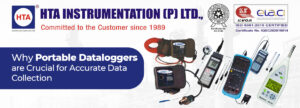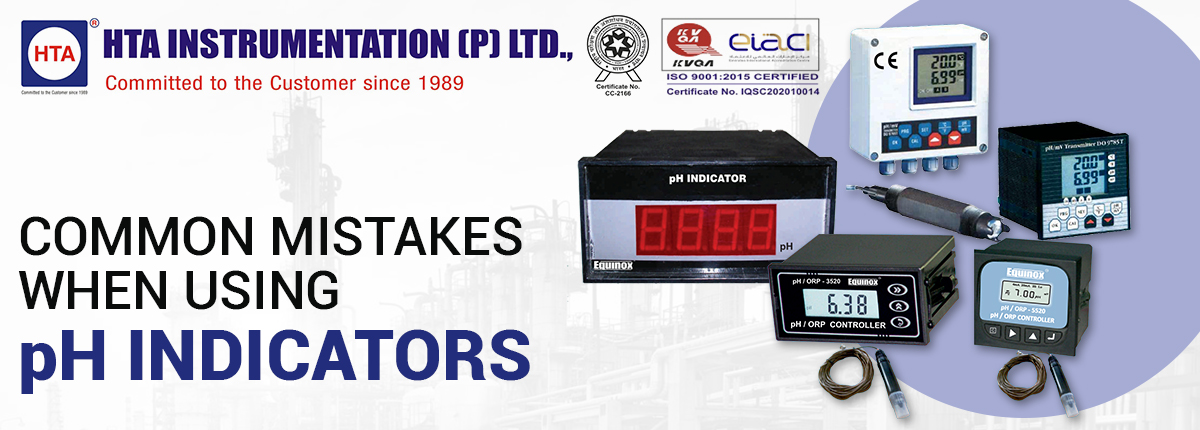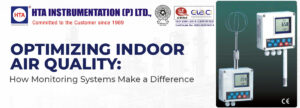
Why Portable Dataloggers are Crucial for Accurate Data Collection
Portable dataloggers are essential in various industries where precise data collection and monitoring are necessary for quality and safety. At HTA Instrumentation (P) Ltd., we

pH indicators play a crucial role in various fields, from laboratories to industrial settings, helping us understand acidity and alkalinity levels. However, to get reliable results, it’s essential to use them correctly. At HTA Instrumentation P Ltd, we’ve seen some common mistakes that can affect the accuracy of pH measurements. Let’s explore these pitfalls and how to avoid them to ensure your pH readings are spot on.
One of the most fundamental yet overlooked aspects of pH measurement is calibration. Think of it as tuning your instruments to ensure they’re giving you accurate readings. Without regular calibration using pH buffers, your measurements can be off, leading to incorrect conclusions and decisions.
Solution: Make it a habit to calibrate your pH meters and indicators according to the manufacturer’s guidelines. Use certified pH buffers before each use or as recommended. It’s a small step that makes a big difference in result accuracy.
Just like food or medicine, pH indicators have a shelf life. Using expired indicators or those contaminated from improper storage can lead to unreliable results. These indicators may not respond correctly to pH changes, affecting the entire measurement process.
Solution: Store your pH indicators properly in cool, dry places as recommended. Replace them promptly when they expire, and ensure they don’t get contaminated by cross-contact with other chemicals.
Did you know that pH readings can fluctuate with temperature changes? Ignoring temperature effects can skew your measurements, especially in critical processes where precision is key. It’s crucial to account for these variations to maintain accuracy.
Solution: Invest in pH meters that compensate for temperature changes or apply corrections based on calibration standards. This ensures your pH readings reflect true acidity or alkalinity levels, regardless of temperature fluctuations.
The old saying holds true in pH measurement—how you prepare your samples directly impacts the accuracy of your results. Inadequate mixing, improper rinsing of equipment, or using unsuitable containers can introduce contaminants or alter pH levels, leading to misleading readings.
Solution: Follow standardized sample preparation protocols tailored to your specific application. Use clean, non-reactive containers and ensure thorough mixing to obtain representative samples for accurate pH analysis.
pH indicators work by changing color to indicate pH levels. However, interpreting these color changes accurately can be tricky. Factors like lighting conditions paralax errors, …. individual differences in color perception can lead to misinterpretations, affecting the reliability of your pH measurements.
Solution: Standardize your viewing conditions with consistent lighting and use color reference charts or electronic devices for objective color analysis. Train your team to recognize and interpret color changes consistently to ensure reliable pH readings.
pH electrodes are essential tools that require regular care to perform accurately. Build – up of debris, contamination, or electrode aging can compromise their response, leading to inaccurate pH measurements over time.
Solution: Clean your pH electrodes with appropriate solutions after each use and store them correctly in electrode storage solutions. Follow manufacturer guidelines for maintenance, including periodic recalibration and replacement when necessary.
Proper documentation is crucial in pH measurement to ensure consistency and traceability of results. Without documenting calibration details, sample preparation steps, or measurement conditions, it’s challenging to verify the accuracy of your pH readings.
Solution: Develop and maintain standardized operating procedures (SOPs) for pH measurement practices in your organization. Document each step, from instrument calibration to data interpretation, to ensure reproducibility and compliance with quality standards.
Samples can contain substances that interfere with pH measurements, leading to inaccurate results. Ignoring potential interferences can undermine the reliability of pH indicator readings, impacting the validity of your data.
Solution: Conduct preliminary tests to identify potential interferences in your samples. Choose pH indicators or methods that minimize interference effects, such as selective electrodes or sample pre-treatment techniques, to ensure accurate pH measurements.
Regular Quality Control checks are essential to validate the accuracy and reliability of pH measurements over time. Skipping these checks or neglecting to verify instrument performance can lead to undetected errors and compromised data quality.
Solution: Implement a robust quality control program that includes periodic verification of pH meters, indicators, and measurement procedures. Conduct proficiency testing, compare results against reference standards, and address any discrepancies promptly.
Effective pH measurement requires trained personnel who understand the principles and best practices. Insufficient training and awareness can lead to procedural errors, misinterpretations, and compromised data integrity.
Solution: Provide comprehensive training programs on pH measurement techniques, instrument operation, and indicator application. Emphasize adherence to established protocols and continuous professional development to enhance competency and proficiency among your team.
Avoiding common mistakes when using pH indicators is crucial for obtaining accurate and reliable pH measurements in scientific, industrial, and environmental applications. At HTA Instrumentation P Ltd, we’re committed to helping you achieve precise results with our expertise and quality instrumentation solutions. By addressing these common pitfalls and implementing best practices, you can enhance data integrity, optimize processes, and make informed decisions based on accurate pH analysis.

Portable dataloggers are essential in various industries where precise data collection and monitoring are necessary for quality and safety. At HTA Instrumentation (P) Ltd., we

Clean room validation is crucial in industries where controlled environments are essential, such as healthcare, pharmaceuticals, and biotechnology. HTA Instrumentation P Ltd specializes in clean

In today’s fast-paced world, maintaining a healthy indoor environment is more important than ever. Indoor air quality (IAQ) directly affects the health, comfort, and productivity

In today’s world, sound measurement and monitoring play a crucial role in industries ranging from environmental testing to workplace safety. A Sound Level Data Logger
